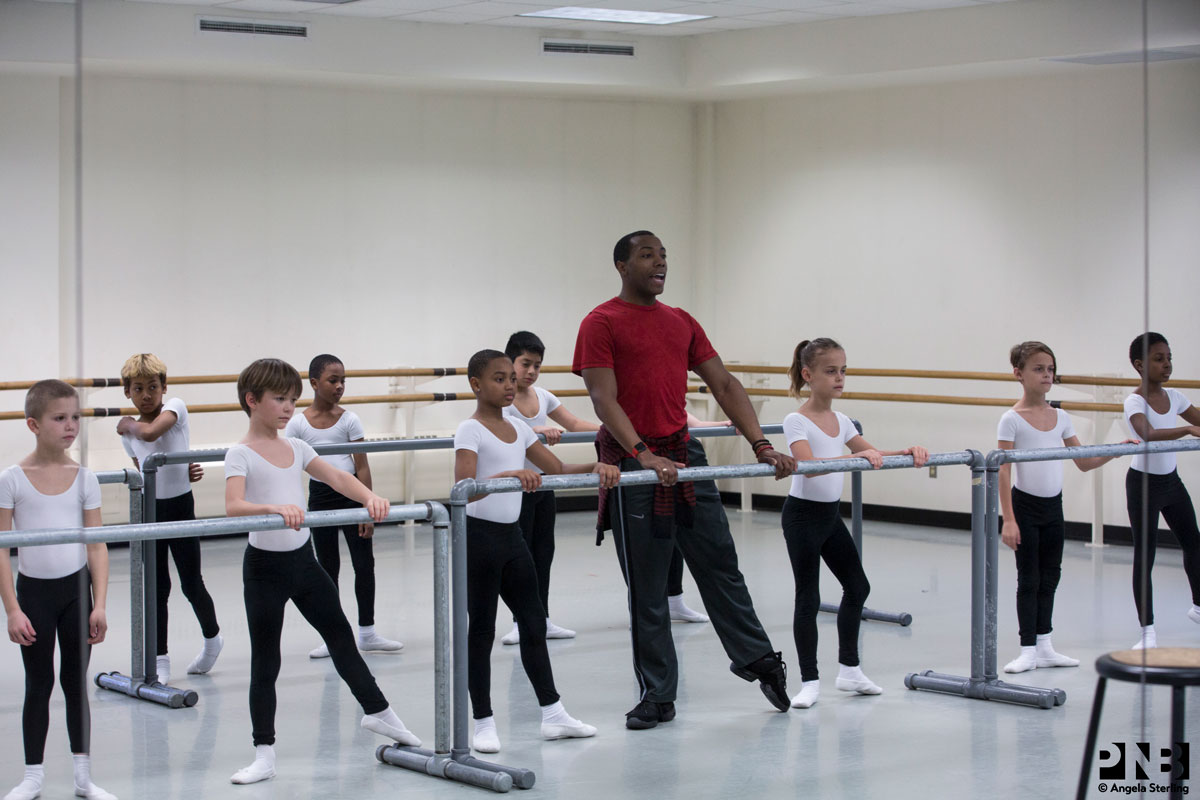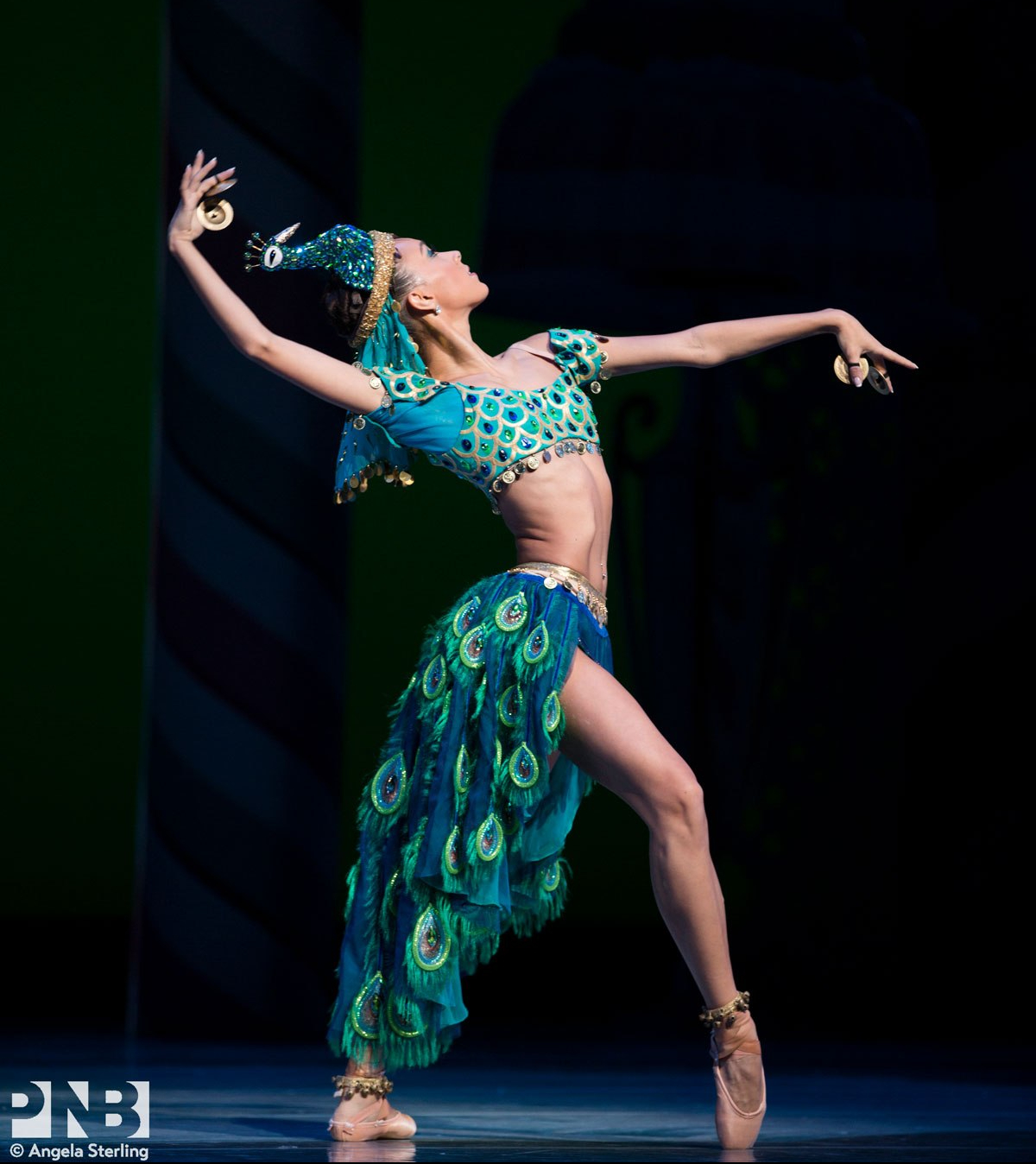We’re so lucky to welcome artists from all over the world to PNB’s studios to stage ballets. Each ballet requires a stager, the artist who teaches the steps, timing, and intention of a ballet on behalf of the choreographer.
For our upcoming mixed bill EMERGENCE, RAkU choreographer Yuri Possokhov sent stager Quinn Wharton to PNB. Quinn was in the original cast of RAkU, and in recent years, he’s helped Yuri in the studio.
But Quinn might not have met Yuri if it weren’t for PNB. Flashback to the mid ‘90s, when Quinn was a third-grader in Wallingford, Seattle: He was recruited into PNB School’s DanceChance program.

After a year in the DanceChance program – and a few more in summer courses at PNB School and other ballet academies across the country – Quinn decided to make a career out of ballet.
He was accepted into the North Carolina School for the Arts, where he performed before moving to California to dance with San Francisco Ballet for eight years. He met Yuri Possokhov, danced in RAkU, and picked up a passion for photography before moving to Chicago to dance for Hubbard Street Dance Chicago for three years.
Quinn later staged RAkU for the Joffrey Ballet, and in 2017, he worked closely with Yuri on Nureyev for the Bolshoi Ballet. Now, he returns to his childhood home of Seattle to work with three casts of dancers and bring RAkU to life again.
But wait…what’s DanceChance?
PNB identifies students in Seattle Public Schools with talent for classical ballet, then offers those students the opportunity to study classical ballet on full scholarship, dependent only on the students’ potential and interest in the program.
Quinn was both interested and full of potential.
“I remember I could do the splits at the time, which I think cinched the deal,” he said about his audition. “That, and being a boy, and taking some dance helped.”
Founding Artistic Director and Director of PNB School Francia Russell created DanceChance in 1994, just one year before Quinn auditioned. The program aims to enrich students’ lives through ballet, cultivate diversity in PNB’s Company and School, and train the next generation of ballet dancers.

“Few, if any, of them ever would have known about their talent without the DanceChance program and some might never have found a productive passion in life,” Francia said. For Quinn, that’s definitely true.
“It’s not overly dramatic to say DanceChance did change my life,” he said. “And I think it does for a number of people, whether they become dancers or not.”
In addition to full-scholarship ballet training twice per week, DanceChance provides students with dancewear, shoes, transportation to & from PNB and their elementary school, and tickets to PNB performances.
They’ll often tour the PNB Costume Shop, meet professional dancers, and receive guest instruction. All classes feature live musical accompaniment, as well as teaching by renowned faculty of the PNB School.
Life after DanceChance
Quinn isn’t the first DanceChance student to make a career of ballet. Current corps de ballet member Angeli Mamon began her career in the program, and former corps member Eric Hipolito was also a DanceChance student.
Other professional dancers include Jade Butler and Levi Teachout, who dance with Grand Rapids Ballet; Carlos Cruz and Alexa Domenden, who both danced for Oregon Ballet Theatre; Alice Cao, who traveled to Singapore Dance Theatre after DanceChance; Bella Ureta, who was part of Boston Ballet II and currently dances with Cincinnati Ballet; and Ken Mankin of Ballet Austin and Ballet Met II.

But even if they don’t go onto careers in dance, the majority of PNB’s DanceChance alumni report higher levels of self-esteem and interest in the arts, and 100% of students’ parents say their children had a positive experience in the program.
“The DanceChance program lit a fire in my daughter that I have not seen before,” said one parent of a Beacon Hill DanceChance student. “She is more confident and joyful. Ballet was not a sport that we had thought about. I’m so glad DanceChance found her.”
Partner schools notice the difference, too.
“As a Title I school with a diverse population and 82% [of students] on free or reduced price lunches, our students unfortunately miss out on so many activity opportunities,” said Dearborn Park International School Principal Angela Bogan. “DanceChance has been that opportunity for these students.”
“I feel that once they excel in dance, [DanceChance students] have developed the confidence in themselves to improve their academics,” said Christine McFerran, a third grade teacher at Northgate Elementary.

Sticking with it
Quinn, PNB’s stager for RAkU, agrees that DanceChance left an undeniable impact on his life. He believes he wouldn’t be staging a ballet at PNB if he hadn’t received an opportunity for training in the very same studios.
“I wouldn’t have done ballet. I wouldn’t have had any reason to get into it,” he said. The hardest part for Quinn was sticking with it.
“I liked being special, which is why I kept doing it. I hated being made fun of, but I didn’t get made fun of enough to make me stop. And I liked to get out of school, get on a bus, and go downtown twice a week.”

He agrees DanceChance can encourage better discipline in kids, whether or not they become dancers. Particularly with young men, discipline can be key to overcoming stigma and continuing their ballet training.
“Five minutes at the end of every class, we have to talk about why we do what we do…what’s the point of any of this?” Quinn said. “There is a point, but if you don’t decide for yourself, you get sort of lost.”





